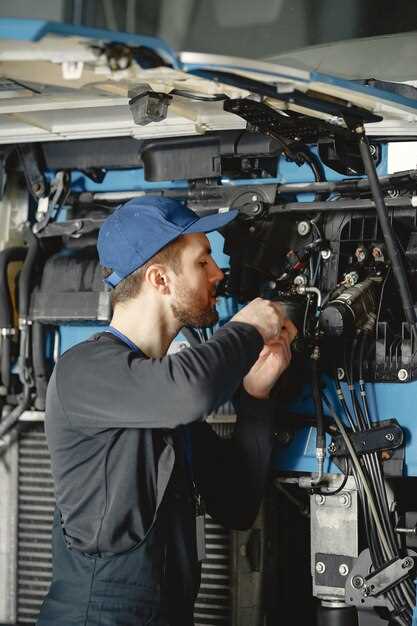
In the world of fleet maintenance, trucks powered by diesel engines play a crucial role in ensuring efficient operations. As these vehicles are subjected to rigorous usage, timely diagnostics and maintenance become paramount to avoid costly breakdowns and ensure optimal performance. For fleet mechanics, having the right tools at their disposal is vital for streamlining the diagnostic process and improving overall vehicle reliability.
When it comes to diagnosing issues in diesel engines, specialized diagnostic tools are essential. These tools not only help in identifying faults but also provide detailed insights into engine performance and emissions. A comprehensive understanding of these diesel diagnostic tools enables mechanics to make informed decisions about repairs and maintenance, ultimately saving time and resources.
This article will explore some of the best diesel diagnostic tools available in the market today. From advanced scan tools that offer in-depth analysis to user-friendly interfaces designed for fleet mechanics, we will cover a range of options to suit different needs and budgets. By equipping yourself with the right tools, you can enhance your diagnostic capabilities and ensure that your fleet of trucks remains in top condition.
Top Features to Look for in Diesel Diagnostic Scanners

When selecting a diesel diagnostic scanner for fleet mechanics, it’s essential to consider several key features that ensure effective troubleshooting and maintenance of trucks. Here are the top features to look for:
- Comprehensive Vehicle Coverage: A good diagnostic scanner should support a wide range of truck models and brands. This includes heavy-duty vehicles, ensuring compatibility with various diesel engines and protocols.
- Multi-Protocol Support: Look for scanners that can communicate with different protocols such as J1939, J1708, and OBD-II. This capability is crucial for diagnosing a variety of diesel engines and their unique specifications.
- Real-Time Data Monitoring: Choose tools that offer live data streaming. This feature allows mechanics to monitor engine parameters in real time, including fuel pressure, temperature readings, and more, facilitating precise diagnostics.
- Diagnostic Trouble Code (DTC) Reading: The ability to read, clear, and interpret DTCs is vital. Good scanners should provide clear definitions and troubleshooting tips for diesel-specific codes.
- Graphing and Data Logging: Advanced scanners often have graphing capabilities, allowing the visualization of data over time. Data logging can help in identifying trends and intermittent issues in diesel trucks.
- Software Updates: Choose a scanner that offers regular updates to ensure it remains compatible with new truck models and updated diagnostic trouble codes. This feature is critical for long-term investment.
- User-Friendly Interface: A straightforward, intuitive interface can significantly reduce the learning curve for mechanics. Look for scanners with easy navigation and clear menus for efficient operation.
- Built-In Repair Database: Some scanners come with integrated repair databases, providing comprehensive repair information and resources, which can save time during diagnostics and repairs.
- Durability and Portability: Since fleet mechanics often work in harsh environments, the scanner should be rugged and portable. Features such as a protective case and easy-to-read display enhance usability in different settings.
- Wireless Connectivity: Advanced diagnostic tools may offer Bluetooth or Wi-Fi capabilities, allowing seamless connection with mobile devices or laptops for convenience and expanded functionality.
By prioritizing these features, fleet mechanics can select the most effective diesel diagnostic scanners to enhance their workflow, ensuring that trucks remain in optimal condition and minimizing downtime.
Comparative Review of Leading Diesel Diagnostic Tools

When it comes to maintaining diesel engines, having the right diagnostic tools is essential for fleet mechanics. Several products have emerged as leaders in the field, each offering unique features tailored to different needs. This review provides a comparative analysis of these tools based on their functionality, compatibility, and user experience.
The first tool worth mentioning is the Witech VCI Pod. Designed for heavy-duty vehicles, it provides extensive diagnostics across various diesel models. Its ability to communicate with multiple systems, coupled with an intuitive user interface, makes it a favorite among mechanics. The Witech also excels in updating software, ensuring that users can always access the latest features and fixes.
Another prominent tool is the BlueDriver Bluetooth Professional OBDII Scan Tool. While primarily aimed at light-duty vehicles, it offers impressive diesel diagnostics capabilities. Its wireless connectivity allows for convenient scanning from a smartphone, while the app provides detailed repair reports and live data monitoring. However, it may not support all heavy-duty applications, limiting its use in larger fleets.
The Autel Maxisys MS908CV stands out for its comprehensive coverage of commercial diesel vehicles. Offering advanced diagnostics, coding functions, and the ability to perform active tests, this tool is suitable for fleet mechanics who need robust capabilities. Its large touchscreen interface simplifies navigation and enhances the user experience, although the price point may deter some users.
For those on a budget, the Launch CRP129E is a commendable option. It provides essential diesel diagnostics, including engine, transmission, and ABS systems, without breaking the bank. While its capabilities are not as extensive as higher-end models, it offers good value for everyday use, making it a solid choice for smaller fleets or individual mechanics.
Lastly, the Innova 3160g is notable for its versatility. This tool supports both OBD2 and diesel diagnostics, making it suitable for a wide range of vehicles. With features like live data streaming and readiness tests, it’s a practical choice for mechanics who work on diverse fleets. However, its interface may not be as user-friendly as competitors, requiring some familiarity for effective use.
In conclusion, the choice of a diesel diagnostic tool largely depends on specific needs, budget, and the types of vehicles being serviced. Each of these tools offers unique advantages, making them valuable assets for any fleet mechanic looking to enhance their diagnostic capabilities.
Best Practices for Using Diagnostic Tools in Fleet Maintenance
Effective use of diagnostic tools in fleet maintenance, particularly for diesel trucks, can significantly enhance the efficiency and reliability of operations. To maximize the benefits of these tools, fleet mechanics should adhere to several best practices.
First, it is crucial to regularly update diagnostic software and firmware to ensure compatibility with the latest vehicle models and technological advancements. This practice helps in accurately identifying issues and streamlines the troubleshooting process. Additionally, maintaining a database of historical diagnostic data can provide valuable insights into recurring problems and help in forecasting potential failures.
Second, mechanics should become familiar with the specific diagnostic tools available for their fleet. Understanding the capabilities and limitations of each tool allows for targeted troubleshooting, minimizing downtime. Training sessions or workshops can be beneficial in keeping the team updated on new features and functions.
Moreover, consistency in the diagnostic process is vital. Establishing standard operating procedures for using diagnostic tools ensures that all team members follow the same protocols, leading to reliable results. This uniformity is essential when analyzing truck performance data over time.
Additionally, it is important to combine diagnostic tool outputs with hands-on inspections. While technology provides valuable information, a comprehensive assessment of the trucks, including physical checks, often reveals issues that diagnostics alone cannot identify. This holistic approach can enhance overall maintenance effectiveness.
Lastly, fostering communication among the maintenance team is key. Creating an environment where mechanics can share findings and experiences from diagnostic tool usage promotes collective learning and problem-solving, ultimately leading to more informed decisions regarding fleet maintenance.




